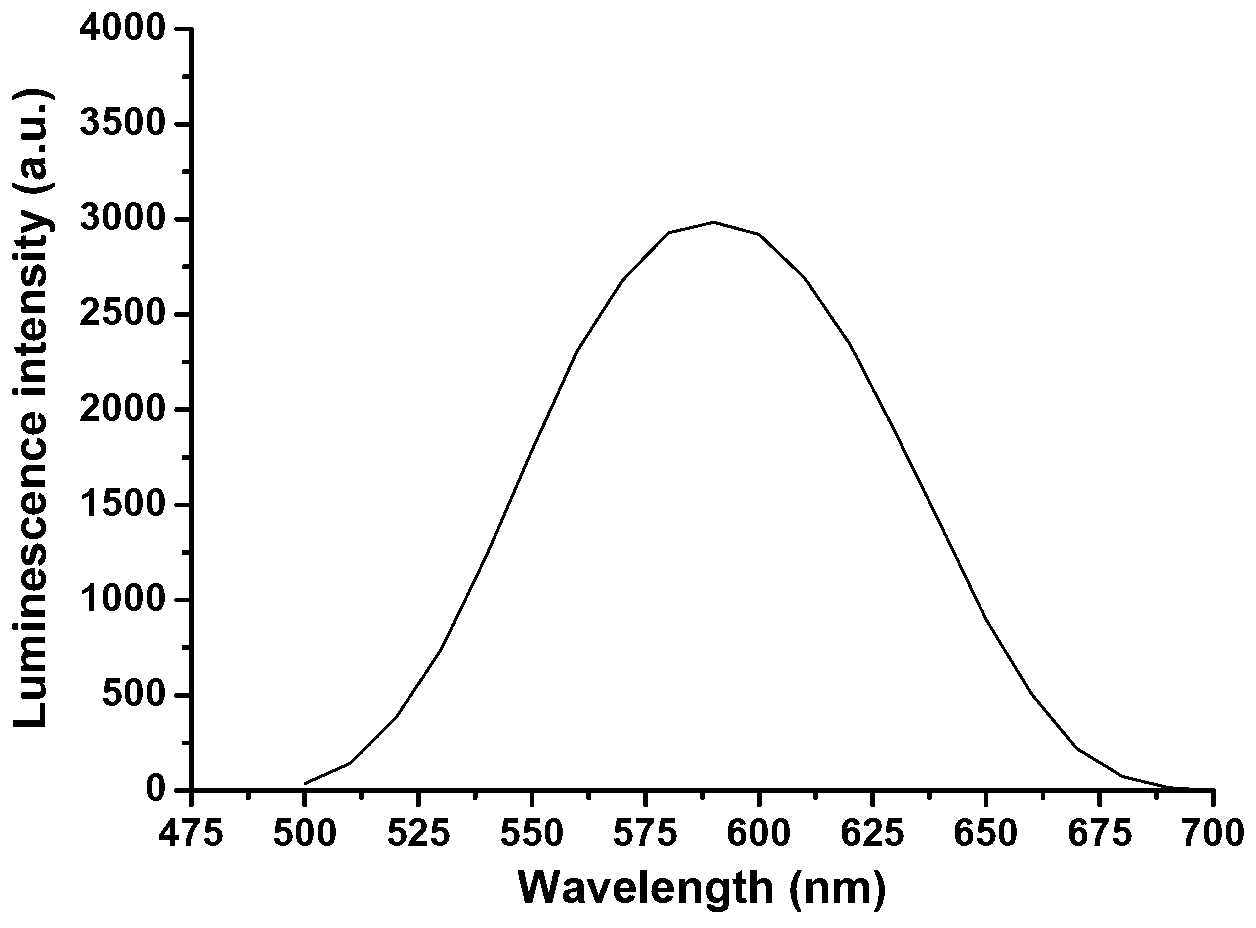Application of gold-silver mixed-metal cluster compound in preparing fluorescence staining reagent for cell nucleolus
A technology for cell nucleolus and fluorescent staining, which is applied in the application field of gold-silver heterometallic clusters in the preparation of cell nucleolus fluorescent staining reagents, and can solve the problems of free radical cell sample damage, cells prone to light damage, and poor photostability , to achieve strong anti-light quenching ability, long fluorescent signal labeling time, and stable imaging
- Summary
- Abstract
- Description
- Claims
- Application Information
AI Technical Summary
Problems solved by technology
Method used
Image
Examples
Embodiment 1
[0016] Nucleolar fluorescent staining of gold-silver heterometallic clusters:
[0017] 1) Human cervical cancer cell line HeLa (purchased from Shanghai Cell Bank, Chinese Academy of Sciences), in DMEM medium containing 10% fetal bovine serum, 37°C, 5% CO 2 , cultivated under saturated humidity conditions. Replace the culture medium every two days, and subculture every 3 to 4 days.
[0018] 2) Handling of cell culture slides. Wash the Φ14mm coverslip with water, soak in sulfuric acid-potassium dichromate solution for 24 hours, wash with distilled water, soak in absolute ethanol, and set aside.
[0019] 3) Preparation of cell slides. Spread the coverslips in a Φ35mm Petri dish in a 1×10 5 Cells / mL seeded, 37°C, 5% CO 2 , placed in an incubator for cultivation.
[0020] 4) After the cells adhere to the wall, wash with phosphate buffered solution (PBS) 3 times, add a gold-silver heterometallic cluster solution with a final concentration of 10 μM and incubate at room temperat...
Embodiment 2
[0024] Colocalization fluorescent staining: see Example 1 for specific steps. After staining with gold and silver heterometallic clusters, wash with PBS and add 2 mL of 4% paraformaldehyde fixative, fix for 30 min, and add commercial nucleolus staining reagent Syto Green RNA Select (Invitrogen) was further incubated for 20 min, and then the solution was aspirated, and the cells were washed 3 times with PBS, each time for 3-5 min. Fluorescent signals were collected from cells incubated with clusters and Syto Green RNA Select with 405nm and 488nm lasers respectively (gold and silver heterometallic clusters: 570±20nm; Syto Green RNA Select: 530±20nm)
[0025] Results: For details, see image 3 and 4 , it can be observed from the figure that the cell nucleolus marked by the cluster compound of the present invention can be well matched with the commercialized cell nucleolus staining reagent Syto Green RNA Select, thus proving that the labeling method of the present invention can c...
Embodiment 3
[0027] Intracellular photostability of clusters and DAPI: see Example 1 for specific steps. After staining with clusters, wash with PBS and add 2 mL of 4% paraformaldehyde fixative, fix for 30 min, add organic dye DAPI for further incubation for 20 min, and then Aspirate the solution, and wash the cells 3 times with PBS, each time for 3-5 minutes. Cells were continuously irradiated with a 405nm laser for time-series scanning.
[0028] Results: For details, see Figure 5 and 6 , it can be observed from the figure that the cell nucleolus region marked by the method of the present invention shows a strong fluorescent signal, and as time goes by (420s), the photostability of the cluster is higher than that of the organic dye DAPI, thus proving that , the labeling method of the present invention has high fluorescence stability.
PUM
 Login to View More
Login to View More Abstract
Description
Claims
Application Information
 Login to View More
Login to View More - R&D
- Intellectual Property
- Life Sciences
- Materials
- Tech Scout
- Unparalleled Data Quality
- Higher Quality Content
- 60% Fewer Hallucinations
Browse by: Latest US Patents, China's latest patents, Technical Efficacy Thesaurus, Application Domain, Technology Topic, Popular Technical Reports.
© 2025 PatSnap. All rights reserved.Legal|Privacy policy|Modern Slavery Act Transparency Statement|Sitemap|About US| Contact US: help@patsnap.com



